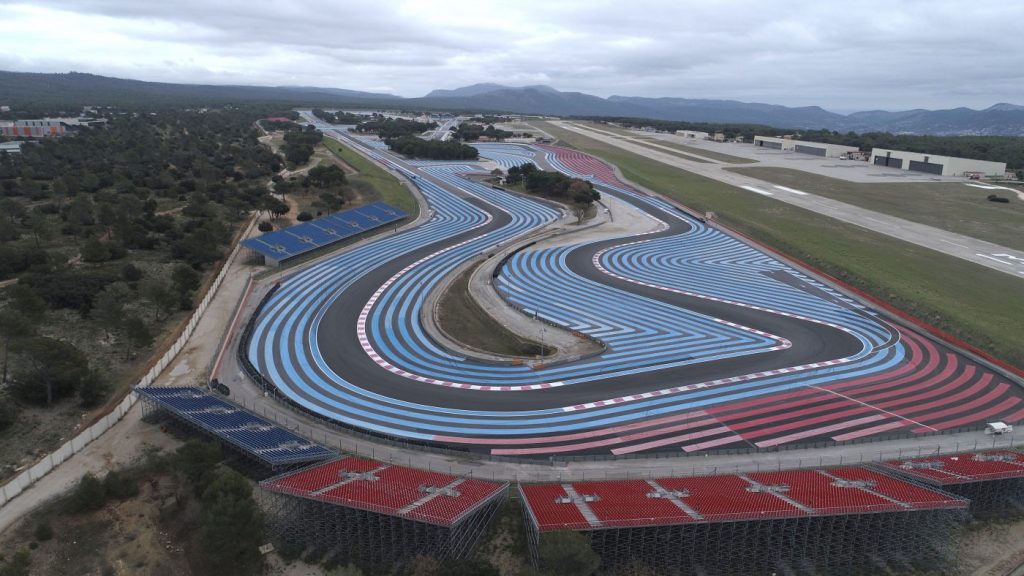
Formula 1 action returns to the Circuit Paul Ricard this weekend, for the FORMULA 1 EMIRATES GRAND PRIX DE FRANCE 2021, after an enforced absence in 2020, with the two World Championships really starting to hot up as we enter a summer of racing across Europe.
Located in the heart of the Sainte-Baume Regional Natural Park in the south of France, teams at the Circuit Paul Ricard have taken great pride and responsibility for over a decade in protecting the idyllic setting the racetrack calls home.
The commitment to improving sustainability at the venue and an innovative strategy to reduce its impact on the environment saw the circuit become the first racetrack in France, and only the second Formula 1 venue to be awarded 3* Sustainability Accreditation by the FIA for all that it has achieved.
From our partners:
As part of the work done to protect the surroundings, Circuit Paul Ricard permanently checks sound emissions through four acoustic measurement stations spread around the site. The circuit has built an 800m-long anti-noise mound, which considerably reduces sound emissions.

The circuit has put increased focus on maintaining a wide variety of wildlife which reside in the area. An inventory, taken in 2018, helped to identify a total of 183 species of plants and flowers, two species of bats, sixteen species of invertebrates, three species of reptiles, five species of amphibians, thirty-six species of birds and two species of mammals, proving the surrounding area is habitable for wildlife – don’t worry, they can’t get on the track itself!
The venue also monitors the quality of its environment through bee health monitoring, where analysis of the bees, conducted twice per year, show that the site has excellent air quality and that activity at the track has no significant impact on its environment.

150ha of surrounding green spaces, roughly the size of 210 football pitches, are managed using environmentally friendly methods, including conservation grazing by controlled livestock, that promotes biodiversity. Meanwhile, rainwater and run-off water from the track and car parks is collected in a 60,000m3 artificial lake. The water from the lake is used to water the green spaces and the track, but also provides a backup supply of water, should it be needed.
20,000m² of photovoltaic solar panels are used as sunshades for guests’ vehicles and in 2019, when F1 was last present at the Circuit Paul Ricard, they produced approximately 3,484MWh of energy, the equivalent annual energy consumption of 2,968 people (excluding heating). All of the energy produced is redistributed via the local electricity grid.

The benefits to the local community continue throughout operations at the circuit, as the promoter works mainly with long-standing local suppliers; 80% of service providers are from the Provence-Alpes-Côte d’Azur region, and operate year-round on site. The circuit has implemented a purchasing policy which is geared towards promoting ecologically designed or recycled products, and favours purchases in large quantities to reduce the amount of packaging and the number of deliveries involved. It is also developing eco-responsibility charters with its customers and event organisers at its site, as well as with service providers to make sure all parties involved are operating sustainably. The Circuit Paul Ricard has an efficient waste management policy enabling 19 different types of waste to be sorted and recycled at the racetrack.
With sustainable fuels an ongoing conversation piece throughout the sport, the track has already played a significant role in reducing the consumption of fossil fuels, by switching its technical vehicles and track safety vehicles to a 100% biofuel, made from vegetable oil and industrial graze, which reduces the carbon emissions by 85%.
Elsewhere in its work on future energies, the circuit has contributed to the development of the hydrogen sector by welcoming the first hydrogen production and distribution station in the Var region, and has a large fleet of electric and hydrogen fuel cell vehicles for the technical teams, plus several electric vehicle charging terminals on site for visitors.
For enquiries, product placements, sponsorships, and collaborations, connect with us at hello@zedista.com. We'd love to hear from you!
Our humans need coffee too! Your support is highly appreciated, thank you!

